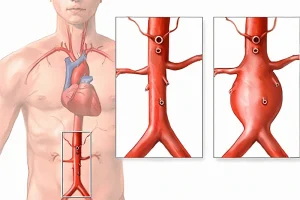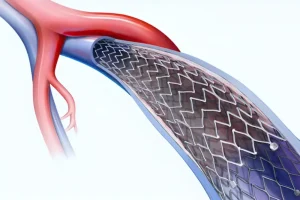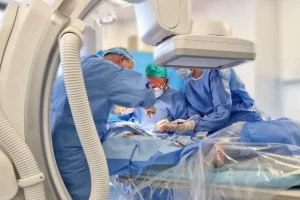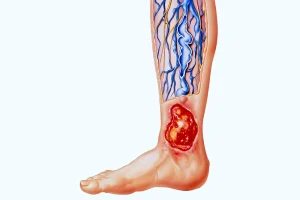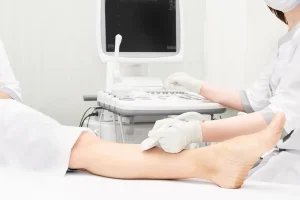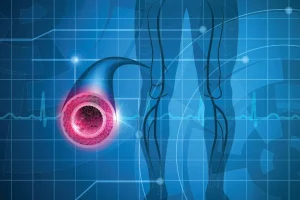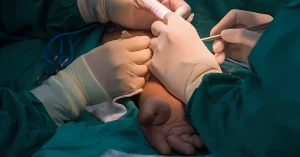Embolization
Get rid of symptoms without complex surgery
Home » Vascular and Endovascular Surgery » Embolization
Medical Procedures
Vascular Techniques
Endovascular Techniques
Conditions Treated

Discover the modern solution for treating vascular conditions without complicated surgery.
The embolization procedure offers a minimally invasive, effective treatment with fast recovery so you can enjoy a life free from pain and discomfort.
Choose the safety and precision of advanced technology for your health.
Book an Appointment
What is an Embolization?
Embolization is a minimally-invasive medical procedure in which damaged blood vessels are blocked using special substances or tiny devices. It is used to treat:
- Aneurysms;
- Uterine fibroids;
- Varicosities;
- Internal bleeding.
The procedure is performed under precise imaging guidance, guaranteeing safety and effectiveness.
Uterine Fibroid Embolization
Uterine fibroid embolization is a minimally invasive procedure used to treat fibroids without surgery. The procedure involves blocking the fibroid’s blood supply by injecting special particles into the uterine vessels.
This shrinks the fibroid and eliminates symptoms such as heavy bleeding, pelvic pain and abdominal pressure.
Benefits of uterine fibroid embolization:
- Minimally invasive: No large incisions and no scarring;
- Rapid recovery: Most patients return to normal activities in 1-2 weeks;
- Uterus preservation: An effective alternative to hysterectomy;
- Reduction of symptoms: Significant improvement in pain and bleeding.
The procedure takes about an hour and does not require prolonged hospitalization. It is a safe and effective solution for women who want to preserve their quality of life without complex surgery.
Benefits of Embolization
- Minimally Invasive – No large cuts or prolonged recovery;
- Rapid Recovery – You’re back to daily activities in just a few days;
- High Efficiency – Precise treatment for conditions such as aneurysms, uterine fibroids or varicose veins;
- No Long-Term Hospitalization – Most patients go home the same day.
How does the Embolization procedure work?
- Initial Consultation: We establish the diagnosis and choose the best treatment option;
- Procedure: A thin catheter is inserted through a small puncture and guided to the affected area;
- Blocking the vessel: The embolizing substance is injected to block the abnormal blood flow;
- Recovery: After the procedure, the patient can recover quickly without lengthy hospitalization.
Why choose VenArt Clinic?
- Experienced Medical Team – Doctors specialized in endovascular procedures;
- Advanced Technology – We utilize state-of-the-art equipment for precise results;
- Personalized Treatment Plans.
Medical Team
Frequently Asked Questions
Is the procedure painful?
No, local anesthesia is used and discomfort is minimal.
How long does the procedure last?
Usually between 30 and 90 minutes, depending on complexity.
Sex life after embolization
After uterine fibroid embolization, most patients can resume their sex life in about 2-4 weeks, depending on their doctor’s recommendations and their individual pace of recovery. The procedure does not affect long-term sexual function, and many women report a significant improvement in the quality of their sex life due to the disappearance of symptoms such as pelvic pain or heavy bleeding.
Risks of uterine fibroid embolization
Although embolization is considered a safe procedure, there are some risks, as with any medical intervention:
- Pain and cramping in the first few days after the procedure;
- Mild fever or temporary fatigue;
- Infection (very rare), which may require antibiotic treatment;
- The appearance of an expelled fibroid (removal of the necrotic fibroid through the vaginal canal);
- Temporary or permanent amenorrhea (absence of menstruation), especially in women approaching menopause.
It is important to talk to your doctor to understand the risks and benefits specific to your situation.
Menstruation after embolization
After uterine fibroid embolization, periods tend to become:
- More regular and less heavy than before the procedure;
- Sometimes there may be delays or a temporary absence of menstruation during the first 1-2 months after embolization.
For most women, symptoms related to heavy bleeding improve significantly after the procedure.
What happens after embolization
- Short hospitalization: Patients are usually discharged the same day or the next day.
- Pain and cramping: It is normal to experience moderate pain for a few days, controlled with painkillers recommended by your doctor.
- Symptoms improve: Over the next few months, symptoms such as heavy bleeding, pain and pelvic pressure reduce significantly.
- Shrinking fibroid: The size of the fibroid gradually reduces over the next 3-6 months.
Recovery after fibroid embolization
Recovery after embolization is relatively rapid:
- First days: Rest at home and pain relievers are recommended to control pain.
- 1-2 weeks: Most patients can resume normal daily and work activities.
- Strenuous physical activity: Avoid strenuous exercise and heavy lifting for about 4 weeks.
- Follow-up consultation: An evaluation 1-3 months after the procedure to monitor progress.
Price of uterine fibroid embolization
The cost of uterine fibroid embolization can vary depending on the clinic chosen, the equipment used and the complexity of the procedure. The average price for this procedure in Romania is between 7,000 and 12,000 lei. It is advisable to contact the clinic for a personalized offer and for details about insurance coverage.

